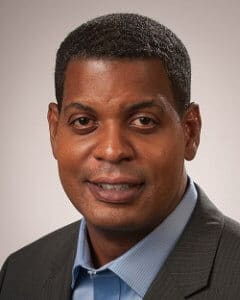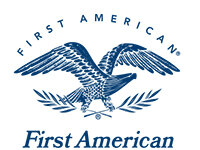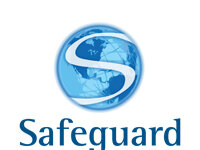 The Mortgage Partnership Finance (MPF) program is celebrating its 20th anniversary this year – but how much do most mortgage lenders really know about this unique loan program?
The Mortgage Partnership Finance (MPF) program is celebrating its 20th anniversary this year – but how much do most mortgage lenders really know about this unique loan program?
Originally established in 1997 as a business line of the Federal Home Loan Bank (FHLB) of Chicago, the MPF program (in partnership with the other FHLBs), enables participating members of the FHLB system – mostly small to midsize community banks and credit unions – to sell fixed-rate loans (and some jumbo adjustable-rate mortgages, or ARM loans) into the secondary mortgage market. It provides these community lenders – some of whom may lack direct access to the secondary market – with more options for offering new mortgage products and/or improved rates for their customers.

One of the MPF program’s goals is to help foster competition in the secondary market for higher-quality loans. It is based on the simple premise that by combining the credit expertise of a local lender with the funding and hedging advantages of an FHLB institution, one can create a stronger, more efficient method of financing residential mortgages. Currently, nine out of the 11 FHLBs offer the MPF Program to their members.
To learn more about how the MPF program and how the FHLB system has grown and evolved over the years, Secondary Marketing Executive and MortgageOrb recently interviewed Steve Thomas, senior managing director, mortgage capital markets, from the FHLB of Chicago. Thomas has more than 20 years of experience in investment banking, pricing and portfolio management, as well as extensive knowledge of the MPF program. He says although the FHLB system “could be a more prominent name” in the industry (“When most people hear the term ‘GSE,’ they tend to think just of Fannie Mae and Freddie Mac and forget about the FHLB system,” he says), the FHLBs have enjoyed growth while keeping a low profile.
What follows are excerpts from our interview.
Q: How do the MPF program and the FHLB system work to support community lending?
Thomas: The FHLB system was the first housing government-sponsored enterprise, founded in 1932. So, we’re 85 years old today. By comparison, Fannie Mae was founded in 1938, and Freddie Mac in 1970. We’ve been serving our members for quite a while. The size of the FHLB system, since then, has grown considerably. In 2016, we surpassed $1 trillion in assets. The system today comprises 11 regional Federal Home Loan Banks and the Office of Finance. Our membership has also grown over the years – today it exceeds 7,100 members system-wide. Membership is generally limited to federally insured depository intuitions, credit unions, insurance companies and community development financial institutions.
In terms of the MPF program, when we started the program in 1997, we had six approved sellers, and today we have over 2,000. Moreover, the program’s membership has increased dramatically in recent years – since 2011, we have added more than 650 Participating Financial Institutions (PFIs), so acceptance and utilization of the MPF program has really accelerated during and after the housing crisis with our members.
Q: What are the factors that led to this rapid growth in the post-recession years?
Thomas: As we see it, the market share in the mortgage market has shifted dramatically, in that the big-bank share has come down a lot, and the non-bank/community-bank market share has increased. So, we’ve benefited from that general market trend. In addition, I think once Fannie Mae and Freddie Mac went into conservatorship in 2008, certain institutions may have looked to make sure they had other outlets to sell loans through. We also know that the correspondent businesses and the wholesale businesses were being disrupted; some shut down completely, some went out of business and some came back into business. For those reasons, I think some lenders started to look at the FHLB system as an additional outlet.
However, despite the rapid growth in the number of members, the profile of our typical seller hasn’t changed: I can tell you that about two-thirds originate less than $50 million per year in loans, and about 40% do less than $20 million per year.
I think the other distinction is that, today, we don’t have any of the top 10 originators in the program. None of the big banks – and none of the large independents – participate in the MPF program. So, while we have a lot of sellers, we do not have the commensurate volume because we have a totally different profile.
Q: What products and services does the MPF program offer? What makes the MPF program different from the other loan programs?
Thomas: To date, about 1.6 million home loans have been processed via the MPF program. Our focus is really on service to our members. Some of the FHLBs offer all of our products to their members, while others offer only some of our products. In general, our products focus on operations, product development, capital markets, transactions and other functions, all of which are centralized and managed by the FHLB of Chicago.
Two FHLBs – the FHLB of Indianapolis and the FHLB of Cincinnati – offer their own individual mortgage purchase programs. These programs are similar to the MPF program in that they are also risk-sharing programs, but each offers a slightly different version.
As far as products go, the MPF program offers a total of four. The MPF Traditional product, which is a credit risk-sharing product, began in 1997. The Traditional product, at its heart, reverses the whole guarantee-fee notion: We pay the member a credit enhancement fee for a risk-sharing function. So, that’s one major difference between us and Fannie and Freddie: We don’t have g-fees, loan-level price adjustments (LLPAs), nor other mortgage-backed securities (MBS) features like buy-up/buy-downs in our MPF Traditional product. And all the loans sold are held on FHLB balance sheets. We don’t securitize these loans.
We’ve added other new products in recent years. Back in 2008, we added the MPF Xtra product – which for us is a pass-through to Fannie Mae. Under this product, PFIs are able to sell conventional, conforming loans to the FHLB servicing-retained or servicing-released without having to establish a direct relationship with Fannie Mae.
In addition, during the past two years, we added the MPF Government MBS program. Ginnie Mae really expanded during the crisis and took on a lot of new counter-parties, a lot of which were non-banks. MPF Government MBS was developed as way for community lenders to participate with Ginnie Mae without having to become a seller-servicer. The FHLB of Chicago was set up as an intermediary so Ginnie Mae would not need to manage new counter-parties.
Last but not least, we added a product called MPF Direct. This is our newest product offering and maybe one of our most exciting because it allows us to enter into the non-conforming jumbo space, including both fixed- and adjustable-rate mortgages up to a maximum loan amount of $2.5 million.
Q: So, is it safe to say that product and pricing are really what set the MPF program apart from the other loan programs?
Thomas: Yes. Basically, it boils down to product and price. We think we offer a very broad product suite – especially for a housing GSE. It’s as broad as Fannie and Freddie in that we offer conventional, FHA/VA and jumbo mortgages. We offer mortgages with credit risk retention, or credit risk sharing or non-credit risk sharing. We offer conforming high-balance jumbo loans – products with best efforts, mandatory, servicing-retained and servicing-released. Recently, we’ve expanded into a very broad product suite.
We don’t charge LLPAs – and that’s also a key differentiator that should be mentioned. But it is unique in that the member must share in the losses. We have different structures, but our members are not ever in the first-loss position. You have the home equity, and you have any private mortgage insurance (PMI), and depending on the structure, you have a first-loss account – and then the member is at the next tier. But even there, we’re paying our members credit enhancement fees each month that could potentially help offset any potential losses.
Q: What would you say have been the most important milestones for the MPF program in recent years?
Thomas: I think the most distinct thing has been the outstanding loan performance. The MPF program was battle-tested during the recession, and it has performed admirably. We’ve tracked our delinquencies, our losses and our loan performance pre-crisis, during the crisis and post-crisis, and across every measure we’ve looked at, we’ve had better loan performance [than the national average]. And the main reason for that is these are community lenders that know their customers. That’s part of the reason why these loans have performed so extremely well.
In fact, of the 1.5 million conventional loans originated since the start of the program, the actual losses paid by PFIs is not material, to date. But the real significant number is the net of the credit enhancement fees that the FHLBs pay out. As I mentioned earlier, we pay credit enhancement fees – and [in the event of a default], once the equity and first-loss account are used up, then the member is on the hook for the losses. Well, when you net all that out – through the whole crisis and across our entire history – we’re in the positive. So, we’ve paid out more positive income to our members via credit enhancement fees relative to losses.
So when people ask, “What’s the milestone?” it’s really that we’ve built up all this history and can show that the program has worked.













Do you have to do an interior inspection for each quarterly report? What form do u use?
I remember when you worked in California in the 90’s
That is a great accomplishment 20 yrs of great work . keep up and we share your accomplishment.